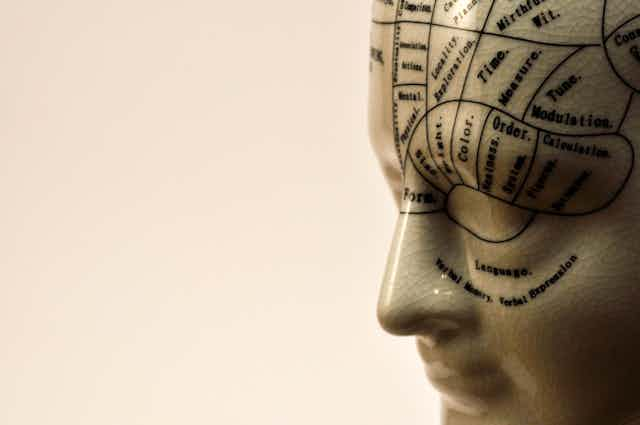What’s in a face? If we are to believe research conducted over the last decade or so, the answer is: a lot. And according to a recent study, facial dimensions can even reveal a person’s sex drive. While men had a higher sex drive than women, in both sexes it was people with relatively wider faces that had this higher sex drive.
On its own, this finding seems surprising at best and crazy at worst – how could the shape of someone’s face possibly have anything to do with their libido? When viewed in the context of other studies, however, it starts becoming clearer that there may be some logic and truth to it. In fact, unlike the classic 19th-century approach of phrenology, the detailed study of head-shape to infer character, the study of facial appearance is largely (albeit not always) driven by careful consideration of biology and evolutionary theory.
Take another recent study where an artificial intelligence program correctly identified people as gay or straight – 81% of the time for men and 74% of the time for women – based on an analysis of their face. The study also found that, on average, gay men had more feminine facial features than straight men, while lesbian women had more masculine features than straight women. For the purpose of understanding what’s in a face, the finding that gay and lesbian faces have less sex-typical features is interesting because it aligns with one current model that suggests the development of sexual orientation is the result of hormone exposure in the womb.
Hormones probably also play a critical role in the first study about sex drive; wider faces (relative to height) have been linked to higher levels of testosterone. Testosterone, in turn, influences sex drive. In fact, facial width has been associated with other testosterone-linked characteristics, such as dominance and aggression. Together, these studies provide a clear picture that testosterone drives both behaviour and facial appearance.
Facial cues to behaviour are also automatically picked up by most people. Just think of the last time you met someone and thought he or she looked trustworthy, friendly or aggressive. It is very likely that other people would agree with your assessment; many studies show that people highly agree when it comes to gleaning personality or behavioural traits from faces. For example, in line with the wide-face-dominance association mentioned above, earlier studies have found that people tend to associate wide faces with dominant behaviour.

Overgeneralising
Our knack for perceiving characteristics from people’s faces is perhaps where phrenology comes back into play. People agree with each other about the characteristics that are presented in a face, but we oversimplify this task, ending up with overgeneralisations or even false perceptions. For example, there is excellent agreement between people about what makes a face look trustworthy or untrustworthy, but there seems to be no truth in these perceptions – it doesn’t actually mean that person is or isn’t trustworthy.
A study conducted by Nick Rule and others found that in the lab, as well as the real world, people seen as untrustworthy were, as a group, no less trustworthy than those seen as highly trustworthy. In the lab, students were encouraged to cheat on a test and there was no difference in perceptions of trustworthiness from facial photographs of those students who did cheat and those who did not. Similarly, when shown pictures of military criminals and war heroes, observers did not rate trustworthiness any differently.
From an evolutionary perspective it makes sense for us to overgeneralise, especially when it comes to negative traits. It is safer to overestimate someone’s aggressiveness than to get beaten up when we don’t expect it. But that means we must be careful not to rely on first impressions too much.
Thinking back to the sex-drive study, while there is a link between facial width and sex drive, it would be wrong to conclude that every person with a wide face is a sex maniac. The association is present when looking across a large group of people, but is better thought of as a tendency rather than a fact present in each individual. Or put differently, if you take 100 people with wide faces and 100 people with narrow faces, the average sex drive in the wide-face group is likely higher, but there will also be people in the narrow-face group whose sex drive is very high or people in the wide-face group whose sex drive is very low.
On balance, studies on facial appearance are telling and well conducted, although there are certainly some that stretch the interpretation so the usual rule of thumb that if it sounds too good to be true, it probably is applies. We can tell a lot from faces including health, character and, yes, even sexual orientation. But while these characteristics are correctly gleaned at group level, we need to be careful not to make assumptions about individuals.

